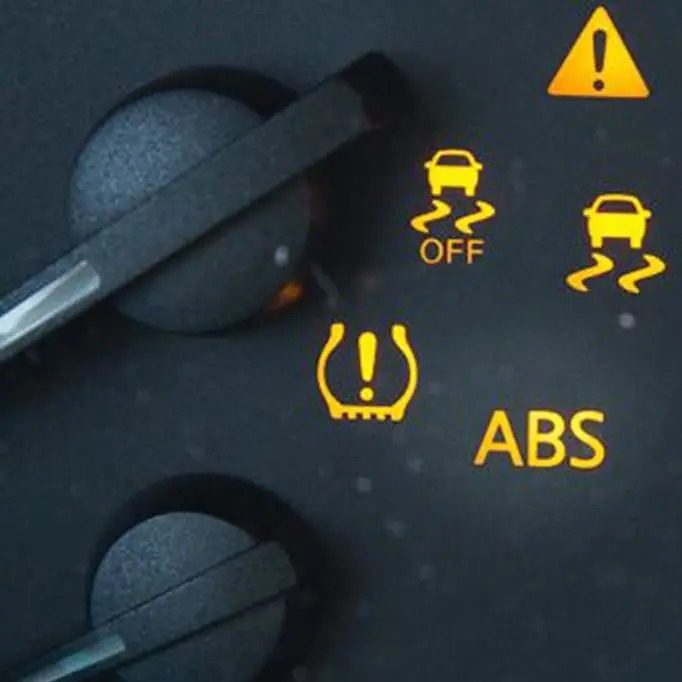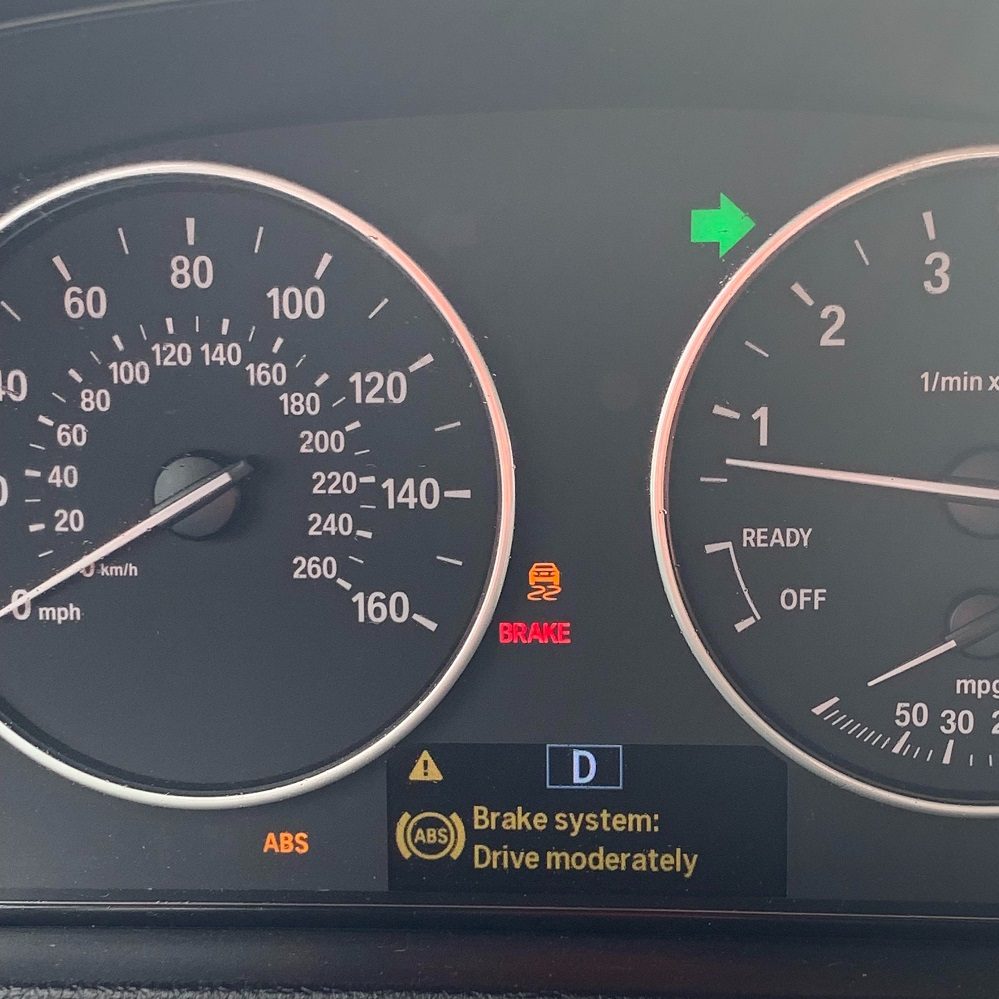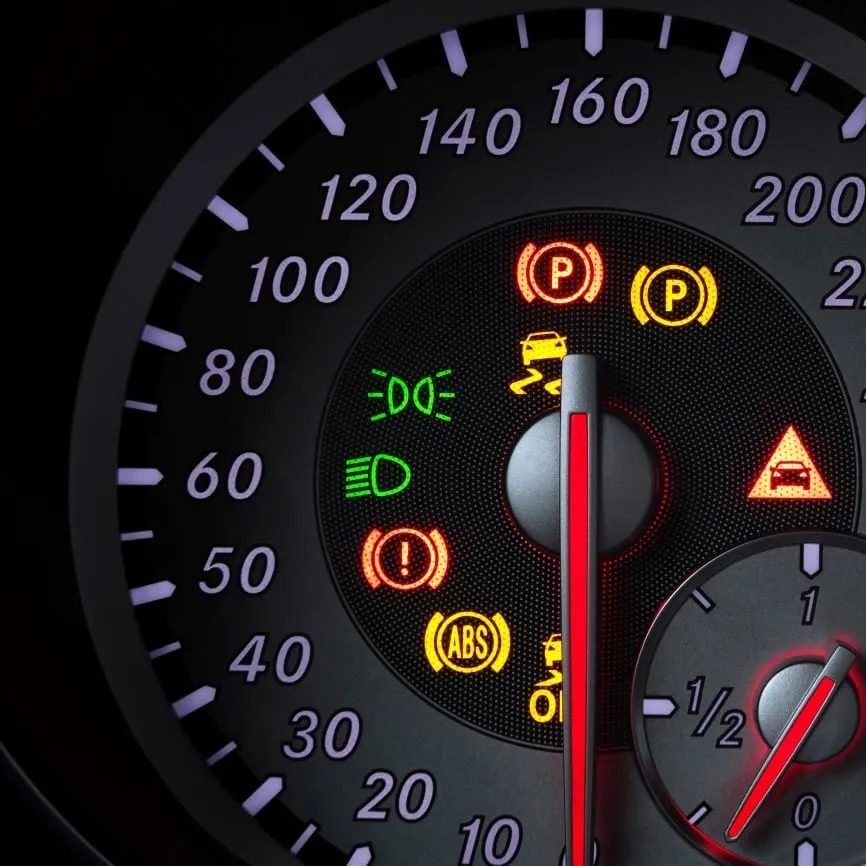Introduction to Anti-lock Braking System (ABS)
The Anti-lock Braking System (ABS) is a technology crucial for modern car safety. ABS prevents the wheels from locking up during braking, ensuring better control. Developed in the 1950s, ABS technology has advanced significantly over time. It is now an essential feature in most vehicles, enhancing road safety and performance.
ABS works by rapidly modulating brake pressure during sudden stops or slippery conditions. This prevents skidding and maintains traction on the road surface. It helps the driver steer safely even while applying braking force. Whether stopping suddenly or driving on slippery areas, ABS is designed to optimize vehicle stability.
The system includes sensors, valves, and electronic control units. Wheel speed sensors monitor the rotation speed of each wheel. When they detect locking, the system adapts the brake pressure. This ensures consistent braking and keeps the vehicle steady.
Modern cars rely on ABS for safe and effective braking. Drivers can feel confident even in challenging driving conditions. Understanding how ABS functions is vital for every car owner. It’s important to appreciate its role in road safety, as well as its requirement for maintenance and care.

Importance of ABS in Modern Cars
The Anti-lock Braking System (ABS) has transformed the automotive industry. Its importance in modern cars cannot be overstated. ABS enhances both safety and performance, making it a crucial feature for vehicles today.
1. Improved Braking Control
ABS prevents wheels from locking up during sudden stops or on slippery surfaces. This ensures better car control and stability. Drivers can steer safely while braking, avoiding obstacles and maintaining vehicle direction.
2. Enhanced Safety
ABS reduces the risk of accidents by preventing skidding or sliding. Especially useful in wet or icy conditions, ABS helps drivers maintain control. It significantly improves the chances of stopping safely during emergencies.
3. Shorter Stopping Distances
Although it depends on road conditions, ABS can reduce braking distance. On wet or uneven roads, this can be life-saving. The system adjusts brake force automatically, leading to quicker stops.
4. Ideal for All Driving Conditions
Modern driving conditions are unpredictable, varying from dry to snowy. ABS adapts to these changes effectively. Whether in a crowded city or on a highway, ABS ensures better handling and safety.
5. Boosts Confidence for Drivers
Knowing a car is equipped with ABS helps boost driver confidence. It provides peace of mind, especially for new or less experienced drivers.
Investing in a car with ABS is investing in safety and control. The advanced technology works seamlessly to provide better driving experiences and reduce risks. Every modern driver should understand the unmatched importance of ABS car technology.

Key Components of ABS
The Anti-lock Braking System (ABS) consists of several crucial components. Together, they ensure effective and safe braking performance.
1. Wheel Speed Sensors
Wheel speed sensors monitor each wheel’s rotation. They detect when a wheel begins to lock during braking. These sensors send data to the ABS control unit, enabling necessary adjustments.
2. Electronic Control Unit (ECU)
The ECU is the brain of the ABS. It processes signals from the wheel speed sensors. Based on these signals, it decides when to reduce or increase brake pressure.
3. Valves
Valves regulate brake pressure in the braking system. They either hold, release, or increase pressure depending on data from the ECU. This prevents locking and maintains wheel rotation.
4. Hydraulic Pump
The hydraulic pump restores pressure in the braking system. It works when the ECU instructs pressure release. By doing so, the ABS ensures effective braking even during sudden stops.
5. Brake Pads and Rotors
Brake pads and rotors are vital for the braking process. They create friction to slow the vehicle. ABS enhances their function by preventing excessive pressure or locking.
6. Wiring and Connections
Wires connect ABS components to work as a unified system. Strong electrical connections ensure accurate communication and response.
These components work together to improve safety during braking. Understanding ABS parts helps drivers appreciate their role in vehicle control and accident prevention.
How ABS Operates During Braking
Understanding how ABS operates is essential to grasp its efficiency. When braking heavily, ABS ensures vehicle control. Here’s how it works in various phases:
- Wheel Speed DetectionSensors monitor wheel speed continuously. If a wheel begins to lock, they send signals to the ECU. This quick detection prevents skidding or sliding.
- Signal Processing by ECUThe Electronic Control Unit (ECU) receives sensor signals. It analyzes data to determine lock risk.
- Pressure Adjustment by ValvesThe ECU commands the system’s valves to adjust brake pressure. This prevents wheel lock.
- Hydraulic Pump ActionIf above-normal pressure is released, the hydraulic pump restores it. This allows steady braking force.
- Maintained Wheel RotationABS ensures that wheels maintain appropriate rotation. This improves traction and steering ability.
Real-Time Operation
ABS functions in real-time and is automatic. Drivers can focus on steering while ABS manages braking.

Performance in Varied Conditions
ABS adapts to different surfaces such as wet, dry, snowy, or icy roads. It ensures consistent performance in all scenarios.
By modulating braking and preventing wheel lock, ABS offers safety and precision. Drivers benefit from smoother stops and enhanced control under challenging conditions.
Benefits of ABS for Safety and Performance
The Anti-lock Braking System (ABS) significantly improves safety and driving performance. It delivers crucial benefits that every driver experiences and appreciates.
Improved Vehicle Stability
ABS prevents wheel lock during braking, maintaining stability on various road surfaces. It helps avoid slides or loss of control, especially in sharp turns or wet conditions.
Reduced Risk of Accidents
By preventing skidding, ABS lowers the chance of accidents. Drivers remain in control, even in emergency braking situations or challenging weather conditions.
Enhanced Steering Control
During braking, ABS allows drivers to steer while applying force on the brakes. This feature is critical for avoiding obstacles and staying on course.
Adaptability to Road Conditions
ABS adjusts to different surfaces, including wet roads, icy paths, or uneven terrains. It ensures optimal braking and traction under all driving conditions.
Shortens Stopping Distance
On slippery or uneven roads, ABS can reduce the distance needed to stop. This advantage can save lives during sudden braking events.
Builds Driver Confidence
Drivers feel more assured knowing their car has ABS. This confidence is especially important for new drivers or challenging driving conditions.
Improves Vehicle Efficiency
ABS works to optimize braking force, reducing wear on brake pads and rotors. This enhances the overall durability and performance of the vehicle.
The advantages of ABS go beyond safety; they also enhance driving experience and operational efficiency. Understanding these benefits highlights why ABS is a must-have in modern cars.

Common Problems and Maintenance Tips for ABS
The Anti-lock Braking System (ABS) is reliable but can face occasional issues. Addressing these problems early ensures safety and proper functionality. Knowing common ABS issues and maintenance tips is essential for every car owner.
Common Problems in ABS
- Faulty Wheel Speed Sensors
- Wheel speed sensors can get dirty or damaged over time, causing them to malfunction.
- When these sensors fail, ABS cannot detect wheel lock effectively.
- Damaged ABS Module
- Corrosion or electrical issues can lead to ABS module failure.
- This causes the system to stop sending proper brake pressure instructions.
- Hydraulic Pump Failures
- The hydraulic pump may wear out or clog, reducing performance during sudden braking.
- This impacts the system’s ability to restore brake pressure effectively.
- Electrical Wiring Issues
- Damaged or faulty wiring can disrupt signal transmission between ABS components.
- Broken connections reduce the efficiency and functionality of the entire system.
- ABS Warning Light Activation
- A glowing ABS light often indicates a problem with the system, such as failing components.
- Ignoring this warning can lead to further damage and unsafe driving conditions.
Maintenance Tips for ABS
- Regular Inspection of Sensors
- Clean and check wheel speed sensors periodically to avoid dirt build-up and malfunctions.
- Check Brake Fluid Levels
- Low brake fluid can disrupt ABS performance. Refill it with the recommended type.
- Inspect Wiring Connections
- Look for loose, corroded, or frayed wires. Replace or fix them as needed.
- Service the Hydraulic Pump
- Regularly service the hydraulic pump to prevent clogs or damage.
- Follow the manufacturer’s recommendations for servicing frequency.
- Respond to Dashboard Warning Lights
- Address ABS warning lights immediately. Consult a mechanic to diagnose and fix issues.
- Brake Pad and Rotor Maintenance
- Inspect brake pads and rotors often. Replace them if they show signs of excessive wear.
By handling ABS problems quickly, you can ensure vehicle safety and reduce repair costs. Regular maintenance not only improves system longevity but also enhances driving performance. It’s worth investing time and effort to keep your ABS working reliably every time you hit the road.

Difference Between ABS and Non-ABS Braking Systems
Understanding the difference between ABS and non-ABS braking systems is crucial for safe driving.
Braking Mechanism
- ABS (Anti-lock Braking System): Automatically controls brake pressure to prevent wheel lock during hard braking.
- Non-ABS Brakes: Do not regulate pressure, often causing wheels to lock during sudden stops.
Steering Ability
- ABS: Maintains steering control by preventing skids, helping drivers avoid obstacles.
- Non-ABS: Locked wheels make steering difficult, reducing control and increasing accident risk.
Stopping Distance
- ABS: Reduces stopping distance on wet or slippery roads by preventing skidding.
- Non-ABS: Longer stopping distance on slippery or uneven surfaces due to locked wheels.
Performance in Different Conditions
- ABS: Adapts to varied road conditions, like wet, icy, or uneven terrain.
- Non-ABS: Struggles on challenging surfaces, increasing chances of accidents.
Driving Confidence
- ABS: Boosts driver confidence by offering stability and reliable braking under pressure.
- Non-ABS: Requires more skill and caution during emergency or harsh braking situations.
Safety
- ABS: Enhances overall safety by reducing risks of skidding and accidents.
- Non-ABS: Higher possibility of accidents, especially in slippery or emergency braking.
Choosing between ABS and non-ABS systems affects driving safety and performance. Most modern cars have ABS due to its advantages. Understanding these systems helps drivers make informed decisions about their vehicles.
ABS and Its Role in Driving Conditions
The Anti-lock Braking System (ABS) plays a vital role in adapting to different driving conditions. It ensures safety and vehicle control for drivers in challenging environments. Here’s how ABS performs in various conditions:
Dry Roads
- On dry roads, ABS provides controlled and efficient braking.
- It prevents wheels from locking during sudden stops at high speeds.
- Drivers can maintain directional control and steer the vehicle safely.
Wet Roads
- Wet roads reduce tire traction significantly, increasing the risk of skidding.
- ABS adjusts brake pressure to prevent sliding on wet and slippery surfaces.
- It ensures stable stops, even during heavy rain.
Icy or Snowy Roads
- On icy roads, braking can lead to dangerous skidding or spinning.
- ABS helps maintain traction by preventing wheel lock.
- Drivers can stop more safely and control steering on snow or ice-covered paths.
Uneven or Loose Surfaces
- Gravel, dirt, or uneven terrains pose unique braking challenges.
- ABS reduces lock-up, helping maintain stability on unpredictable roads.
- It ensures optimal brake force is applied for controlled stops.
Emergency Situations
- ABS is highly effective during sudden braking needs.
- It minimizes risks like skidding, enabling quicker, controlled stops.
- Drivers can safely steer to avoid obstacles while braking hard.
At High Speeds
- At high speeds, sudden braking can destabilize vehicles without ABS.
- ABS modulates brake pressure to prevent wheel lock and retain control.
- It enhances high-speed safety by keeping the car steady.
ABS adapts seamlessly to various conditions, ensuring safety and efficiency. Whether on dry, wet, or icy roads, it provides confidence and control to drivers. Investing in a car with ABS is crucial for handling diverse road situations safely.
Embracing the Safety of ABS
The Necessity of ABS Systems
In conclusion, the Anti-lock Braking System (ABS) is essential for modern vehicles. Its ability to improve safety while enhancing control during braking situations cannot be overstated. As technology advances, the benefits of ABS car will continue to evolve, offering drivers greater confidence on the road.
Investing in Safety Technology
Investing in a vehicle equipped with ABS is one of the most proactive steps you can take for your safety. Understanding how ABS enhances braking efficiency can help you appreciate its role in your vehicle. Prioritizing vehicles with this technology contributes to a safer driving experience for you and your passengers.
Encouraging Safe Riding and Driving
As more drivers become aware of the significance of ABS, the overall safety landscape will improve. Educating fellow motorists about the importance of ABS can contribute to safer roads. Embrace the technology available today, and ride confidently knowing that ABS is there to support you in every journey.
Leave a Reply